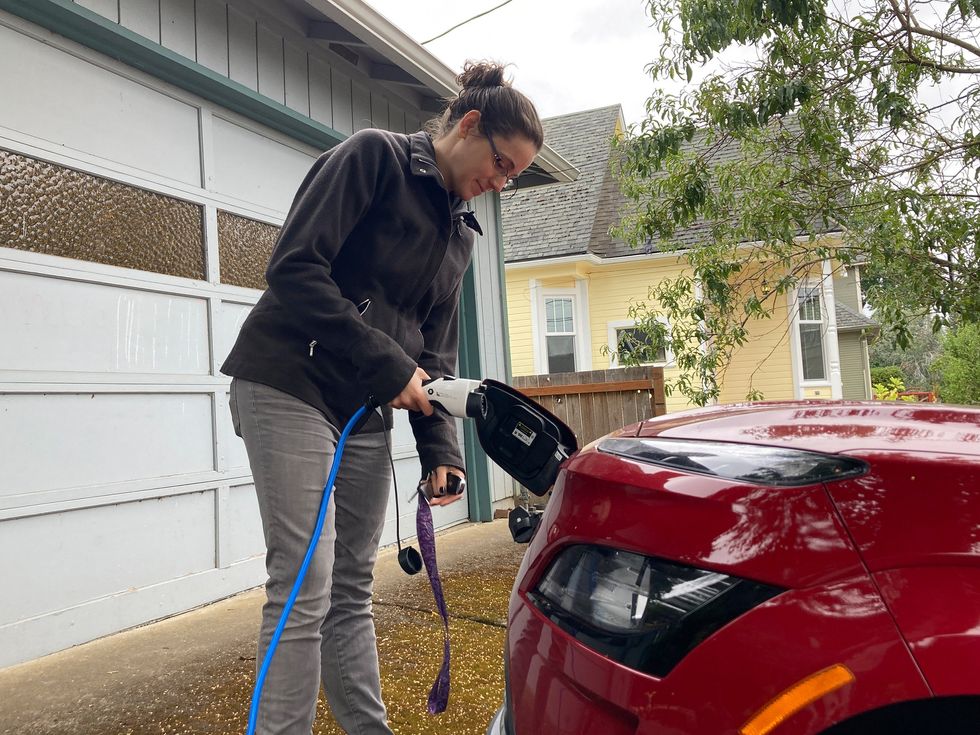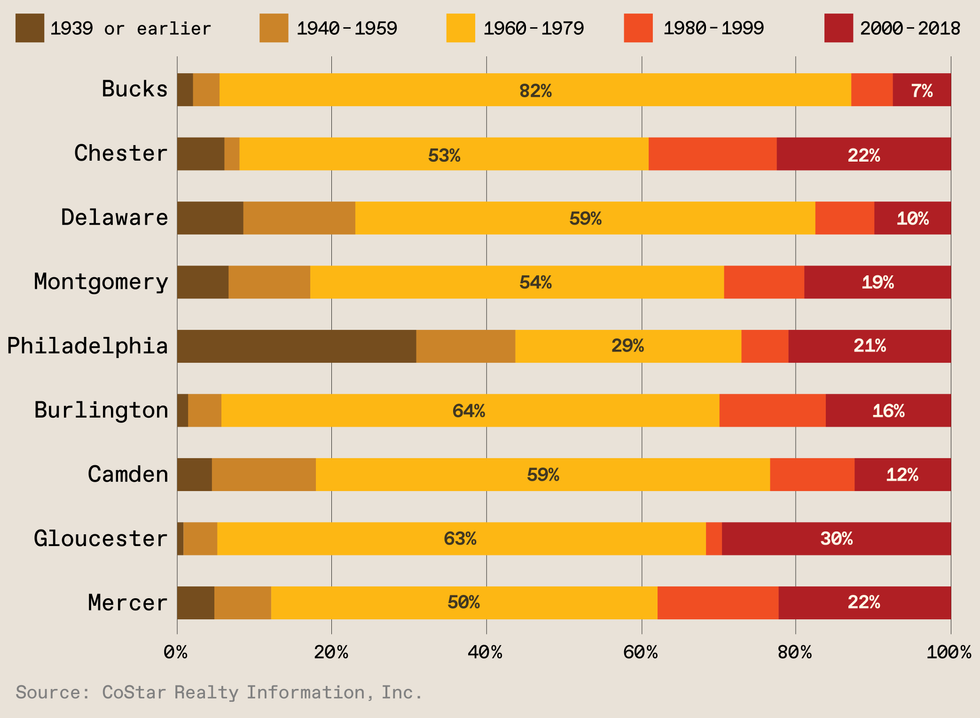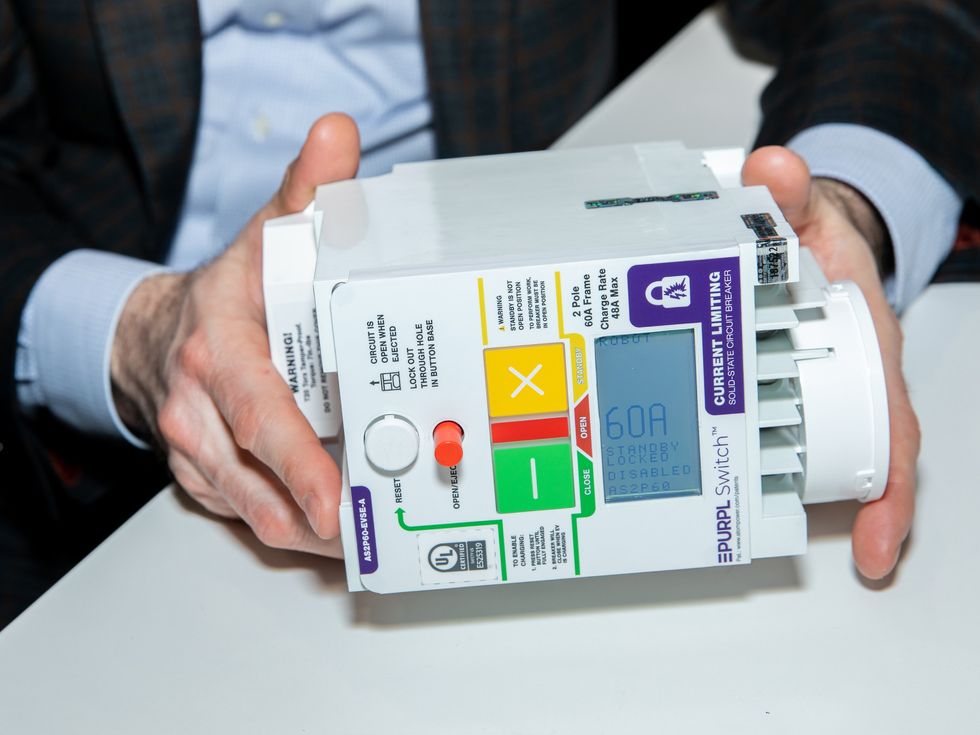When IEEE Spectrum’s editor in chief, Harry Goldstein, needed to replace his 2008 Honda Fit in October 2020, he thought seriously about buying an electric vehicle. Two obstacles stood in his way. One was affordability. Even without a son soon to be entering college, the premium prices of EVs were a turnoff.
The other challenge was where to charge the EV. Harry’s 200-unit condominium building in Minneapolis, Minn., has no EV chargers in its five-story indoor parking garage. There were two Level 2 charging stations about six blocks away in a grocery store parking lot, but that was not a convenient or reliable option.
Harry decided to forego buying an EV, but he remains open to purchasing one if both the affordability and charging issues are better addressed.
“I asked about installing charging stations in our garage and was invited to bring the issue up before the HOA (homeowners association) board, where all good ideas go to die,” he said. “They rejected my request to allow cyclists to hose off their bikes in the alley behind the building, which cost nothing. Considering the costs associated with installation and maintenance and anticipating the resistance I’m likely to encounter, I decided to put my charger crusade on hold.”
Harry is not alone in his EV hesitation—it is widely shared by other condo owners and, even more important in terms of sheer numbers, renters. Consumer surveys from J.D. Power, for instance, indicate that while 27 percent of potential car shoppers are “very likely” to consider an EV as their next purchase, only 17 percent of renters indicate the same level of interest.
The transition to EVs in the United States will hit a deep pothole unless the more than one-third of the 124 million households that rent can be convinced to purchase an EV.
And if they make an EV purchase, they often regret it. For instance, the Minneapolis Star-Tribune reports that one auto dealer just outside the city specializing in used EVs actively discourages renters from buying them unless they have access to at-home chargers because of the unreliability of public chargers. The dealer explained that “a huge number of buyers were returning the EVs they bought” until he discouraged them.
The transition to EVs at scale will hit a deep pothole unless the more than one-third of the 124 million American households who currently reside in rental properties, along with the millions more who live in condos can be convinced to purchase an EV. More importantly, a compelling case must be made to tens of thousands of condo community associations as well as the millions of rental property owners that they should install EV chargers. And with the transition now being supercharged by the proposed EPA tailpipe emissions standards, the pothole is quickly getting deeper. One company, Atom Power, just might have the solution everyone is looking for.
Rental property EV hurdles
The EV challenges for renters are vastly underappreciated. Wading through the wealth of rental statistics from sources like the National Multifamily Housing Council (NMHC) and the Urban Institute, I discovered the full scope and complexity of the impediments involved. For example, according to NMHC data, the median income of rental households in 2020 was US $45,191 compared to $67,463 for all U.S. households. With new EVs costing on average $61,488 at the end of 2022 and being scarcely affordable for the average American family, they are out of reach for the average rental household. Even as used EV prices decline, the vast majority are still out of most renters’ budgets.

Renters in the United States are now spending 30 percent of their income on rent, leaving little to finance the purchase of a vehicle. Even used gasoline-powered cars are averaging a monthly car payment of around $525. On an income of $45,000, the recommended car payment is $416 per month.
Therefore, it is not surprising that homeowners (with an median household income of $82,210, according to NMHC data) make up nearly nine out of 10 sales of all new U.S. light-duty vehicle sales. Nor is it surprising, as a University of California, Berkeley study found, that homeowners purchase EVs at nearly six times the rate of renters. Even among affluent renters in EV-friendly California, the UC Berkeley study observed affluent renters purchase EVs at only one-third the rate of similarly affluent homeowners.
Several states have passed “right to charge” laws that allow renters to install EV Level 1 and 2 chargers, but they are responsible for all installation costs.
One reason for this discrepancy is that most EV owners are able to charge at home, with some 68 percent of EV owners who charge from home using Level 2 charging. Additionally, most of the remaining homeowners using Level 1 charging indicate they are likely to upgrade to Level 2 as well.
For a large segment of renting households, charging from home is a possibility. Approximately 14 million households rent single-family homes, and another 2 million households rent mobile homes with a significant number having a dedicated parking spot. Both types of single-family dwellings might be able to use Level 1 charging without incurring any added electrical infrastructure expense or permission from the landlord. Whether EV-owning renters would find Level 1 charging any more satisfying than EV-owning homeowners is, however, an open question.
Several states, including California, Colorado, Connecticut, Hawaii, Florida, Maryland, New Jersey, New York, Oregon, and Virginia have also passed “right to charge” laws that allow renters at single or multifamily dwellings to install EV Level 1 and 2 chargers on their rental premises, but the tenants are responsible for all installation costs. Some states, like California, require liability insurance to cover damage or injuries that may result from the charger as well. Furthermore, once installed, many rental home and apartment owners have in their leases that any improvements made to the property by the tenant belong to the owner after their rental agreement expires.
While there are no statistics on how many EV owning renters in these right-to-charge states have installed chargers, the number is likely to be extremely small given their expense and the relatively short time renters stay in a property. For example, single-family tenants stay on average three years, while apartment-unit renters remain a little over two years before moving on.
Renters’ EV predicaments
In addition to the 16 million American households living in single-family rental units, according to NMHC data there are roughly 22 million rental households living in apartment buildings with five or more apartment units, as well as some 6 million households occupying buildings with two to four apartment units. Nearly every one of these apartment buildings are without any on-site EV charging.
For instance, a recent National Renewable Energy Laboratory (NREL) quarterly EV charging infrastructure trend report has identified only 1,246 EV charging ports at private multifamily residences across the entire United States, with nearly all being Level 2 chargers. And where they do exist, the ports are often at luxury apartments, which is true in Minneapolis.
Of course, the best option would be for apartment building owners to install EV charging stations at their buildings for tenants to use. However, that is not easily done.
The first hurdle is the installation cost. A detailed 2022 study by the California Energy Commission (CEC) investigated the potential costs of installing EV chargers at nearly two dozen existing multiunit dwellings in southwestern Los Angeles County. To support Level 2 charging, nearly every dwelling needed electrical-panel upgrades, and several would need utility service upgrades. In addition, the study found that costs were directly related to the distance from the electrical panel to the parking spot where the charger was located. Distances of more than 100 feet quickly became expensive. While the average cost per Level 2 parking space was estimated to be around $5,400, several approached $17,000 or more.
The CEC study also found that most of the dwellings it investigated could provide a Level 1 charging space at an estimated cost of around $2,300, although the study acknowledges that Level 1 charging might not satisfy most EV owners.
The sheer number of U.S. apartment buildings poses another challenge. National Multifamily Housing Council data show the 28 million apartment rental households are spread across some 71,000 apartment buildings having 50 or more apartment units, 75,000 buildings with 25 to 49 apartment units, some 419,000 buildings with 5 to 24 apartment units, and a whopping 2.2 million buildings having 2 to 4 units.
Moreover, complementary data from the Urban Institute indicate 49 percent of apartment buildings with 5 or more units and 66 percent of the buildings with 2 to 4 units are more than 40 years old. A typical age mix of multifamily rental housing can be seen in the greater Philadelphia region as shown in Figure 1, from a Delaware Valley Regional Planning Commission report. Many of the oldest multifamily rental units are in Philadelphia, a situation repeated across most cities in the United States. Low-income and minority renters also tend to live in older rental properties. In addition, the vast number of 2-to-4-unit rental properties were constructed during the 1960s and 1970s, which again is generally true across the United States.
Percentage of multifamily rental units built by decade in Delaware Valley

Building age creates another impediment to overcome. Buildings more than 40 years old often have suspect electrical systems. According to the Greater New York Mutual Insurance Co., “the frequency of electrical fires is disproportionally higher in electrical systems that are more than 40 years old.” The causes, GNY says, include inadequate and overloaded electrical systems, aging electrical components, defeated, compromised, or ineffective circuit breakers, or misuse of extension cords, among others. Generally, auto manufacturers frown on using extension cords to power their EVs, and for older buildings, it is not an entirely safe strategy.
Charging EVs from these older buildings’ electrical systems will almost certainly require extensive and expensive upgrades to support the energy loads required, for Level 2 chargers if not for Level 1 as well. It is doubtful, given the cost, that the building owner will want to install an EV charger. Only the very latest apartment buildings are likely to be wired with EV charging loads in mind.
Problems for landlords
The apartment renter’s EV dilemma comes into even starker relief when viewed from the apartment building owner’s perspective. Their first question is, “Why should I take on the costs of installing EV chargers when most of my tenants don’t own or can’t afford EVs?”
A large apartment building of, say, 200 units, is expected to provide about 1.25 parking spots per unit (although it varies per local building code). Of these 250 parking spots, local and state governments are encouraging a minimum of 10 percent be EV ready (that is, have all the wiring ready for an EV charger if a tenant wants to install their own), or better, have those parking spaces outfitted with either Level 1 or Level 2 chargers.
But as the California Energy Commission study indicates, the cost of retrofitting an existing parking spot with Level 2 chargers can be expensive, and even if the building owner installs them, a positive return on investment in a reasonable time frame is not assured. Even for a public charging station, the return on investment can take more than a decade. For apartment building owners, it could be even longer. While a current tenant may have an EV, what is the likelihood that the next tenant will have one as well? An NMHC/Grace Hill Renter Preferences Survey Report states that the 27 percent of apartment tenants interested in EV charging stations were willing to pay $28.12 extra per month in rent for access to an EV charger; by comparison, most renters surveyed were willing to pay an extra $54.73 a month for a washer/dryer unit.
Do Renters Really Need EV Chargers?
Only 76 percent of apartment households own a vehicle compared to 92 percent of all households; yet NHMC data also show 66 percent of apartment households still travel by car, truck, motorcycle, or taxi to work, which is comparable to 76 percent of all U.S. households. Car dependency is as great for apartment residents as for the general population, and for low-income tenants, owning a car is one of the only successful means of getting out of poverty.
Minneapolis illustrates the landlord EV charging investment dilemma. A Minnesota Department of Transportation (MnDOT) EV Dashboard shows as of January 2023 there were an estimated 35,238 EVs on the road (23,121 battery-electric vehicles (BEVs) and 12,117 plug-in hybrid vehicles (PHEVs)), of which some 13,811 of both types reside in Minneapolis. Assuming the same 6:1 homeowner-to-renter EV buyer ratio found by the UC Berkeley study, then about 1,972 EVs are owned by renters in Minneapolis. Next, assuming that the same 2:1 BEV-to-PHEV ratio reported by the MnDOT EV Dashboard holds as well, then there are about 600 BEVs owned by renters in Minneapolis. This means there is likely one BEV-owning renter for every five apartment buildings of five or more units alone in Minneapolis.
Not exactly a ratio to entice apartment building owners to begin investing time and monies in providing EV charging.
What exists today is a vicious cycle where renters, even if they can afford it, are reluctant to buy EVs because there is no convenient, reliable, and convenient charging, and rental property owners, especially of apartment buildings, will not invest in EV chargers because no tenants or only a few use them.
Paradoxically, the move by the federal and local governments to provide more urban and city public charging opportunities, as New York City is doing by installing thousands of pole-mounted EV chargers or creating EV charging hubs, may reduce the motivation of rental property owners to install charging on their properties even more.
Cheap, reliable solution to charging
Regardless of how affordable electric vehicles become for renters, EV charging must make economic sense to rental property owners or it will not be pursued. Many different EV charging companies, such as Blink and EVgo, are trying to unravel the rental property Gordian knot. One EV charger maker, Atom Power, located in Charlotte, N.C., might be able to cleave that knot fueled by a $100 million investment from Korea’s giant tech and energy company SK Inc. and SK Energy.
Atom Power, which IEEE Spectrum first highlighted in 2019, developed the first and only UL-listed and commercially available solid-state digital circuit breaker in the world and is turning 100 years of electrical systems-engineering design processes on their head.
In Atom Power’s case, the solid-state digital circuit breaker is programmed to become the “EV smart charger,” and the charging station itself is a simple terminal block and inexpensive.
For example, EV charging stations must by code have a circuit breaker between the charging station itself and its power source. A traditional circuit breaker is an electromechanical switch that incorporates an electromagnet. When the current exceeds a predefined amperage limit, the electromagnet pulls open or “trips” the switch, thereby interrupting the flow of energy. This process takes about 3 milliseconds.

Atom Power’s digital circuit breaker uses semiconductors to permit the dynamic control of the flow of current, which allows it to vary the current at which to interrupt the energy flow. The digital circuit breaker is also about 3,000 times as fast as most mechanical breakers, enabling circuit interruption capabilities up to 150,000 amperes, the upper limit for today’s circuit breakers.
In most charger designs, the “smarts” are in the expensive and exposed charging station, and the most protected element is the cheap, dumb, mechanical circuit breaker in an electrical panel somewhere. If something goes wrong with the charging station, it is an expensive and often lengthy proposition to fix it. Someone with knowledge of that specific charging station needs to be called in to troubleshoot it, and that pool of people is relatively small.
In Atom Power’s case, the solid-state digital circuit breaker is programmed to become the “EV smart charger” and the charging station itself is a simple terminal block and inexpensive. The solid-state digital circuit breaker, which is in an electrical panel out of harm’s way, has embedded firmware and connectivity to on-premise and cloud-based software that allows it to intelligently manage the charging station. If something goes wrong with the charging station, any electrician has the skills to come in and either replace the charging-station hardware or replace the circuit breaker with another.
Furthermore, with Atom’s cloud software, charging hosts can set load demand limits and can dynamically perform near-instantaneous energy management of the charging station to ensure peak load charges are not incurred from EV charging. Up to 12 of these cybersecured smart circuit breakers can be placed into a single electrical panel that has its own highly secure ISP connection. This allows an almost limitless number of these panels (and their digital circuit breakers) that Atom Power can remotely manage simultaneously, either independently or as a group.
This reduces the complexity of managing hundreds of EVs charging concurrently that may be “across multiple different electrical feeders, across multiple different branch circuits, across multiple different buildings, all not on the same service,” say Ryan Kennedy, CEO and cofounder of Atom Power.
Atom Power is doing just that with several hundred EV charging stations being installed across several different apartment buildings run by one property company in New York City. Last year, Atom Power had orders for 1,000 breakers programmed to be chargers, while this year the company expects to ship 9,000.
What will EV chargers cost me?
The first question a rental property owner is going to ask, Kennedy says, is “What is it going to cost me, and how hard is it going to be?” As a result, he says, “EV charging is immediately viewed as a cost center.”
What needs to be done to change that perspective, Kennedy explains, is to “lower both the cost of entry and operational costs.” What Atom Power has accomplished, he says, is to turn EV charging from a cost for property owners into “an amenity they can use to attract and keep residents, or even a profit center.”
“The breaker is the smart infrastructure doing the job of an EV charger, doing the job of an energy management system, and of course, doing the job of a smart circuit breaker.” —Ryan Kennedy, Atom Power
An objective is to “make it as easy to install and maintain our EV chargers as possible with as little downtime as possible,” Kennedy says, with the ultimate goal being “we want our customers not to have to think about EV charging.”
The importance of providing extensive power distribution and the capability to manage EV charging loads dynamically, remotely, and at scale cannot be overstated.
For instance, by having the all-inclusive insight into EV charging loads, Atom Power can ensure that peak demand–the time when EV owners like to charge and when electricity costs also skyrocket–is not reached. In cost comparisons based on actual electricity rate data in New York, Atom Power has shown that using Atom’s dynamic energy management can save $458 per vehicle per month. The benefits obviously add up quickly, especially as the number of EV charging stations are scaled up and demand charges are high.
Energy management has another advantage: It can reduce the amount and costs of electrical upgrades, especially for older rental properties. “A large portion of our business,” Kennedy observes, “is supporting older infrastructure.”
These types of capabilities and the resulting savings would help renters and condo owners overcome the objections of their building managers and owners to installing EV chargers. Harry’s building manager, for instance, brought up power management and expense as big issues, as she thinks the condo association would have to provision additional capacity for the building for when the load becomes too great.
The other benefit of a solid-state digital circuit breaker is that it can be integrated into the total electrification of a rental (or commercial) property. Many states and cities are mandating that new rental and commercial properties, including major renovations, not only support EV charging but also electrify every appliance used. Atom Power makes this a much simpler proposition to do.
“Everything squarely lands on the circuit breaker,” Kennedy explains, “because it is the thing that is between everything that consumes energy. The breaker is the smart infrastructure doing the job of an EV charger, doing the job of an energy management system, and of course, doing the job of a smart circuit breaker.”
Atom Power may not solve every rental property owner’s EV charging dilemma, but it should help convince many that perhaps they can support EV charging after all.
Robert N. Charette is a Contributing Editor to IEEE Spectrum and an acknowledged international authority on information technology and systems risk management. A self-described “risk ecologist,” he is interested in the intersections of business, political, technological, and societal risks. Charette is an award-winning author of multiple books and numerous articles on the subjects of risk management, project and program management, innovation, and entrepreneurship. A Life Senior Member of the IEEE, Charette was a recipient of the IEEE Computer Society’s Golden Core Award in 2008.



